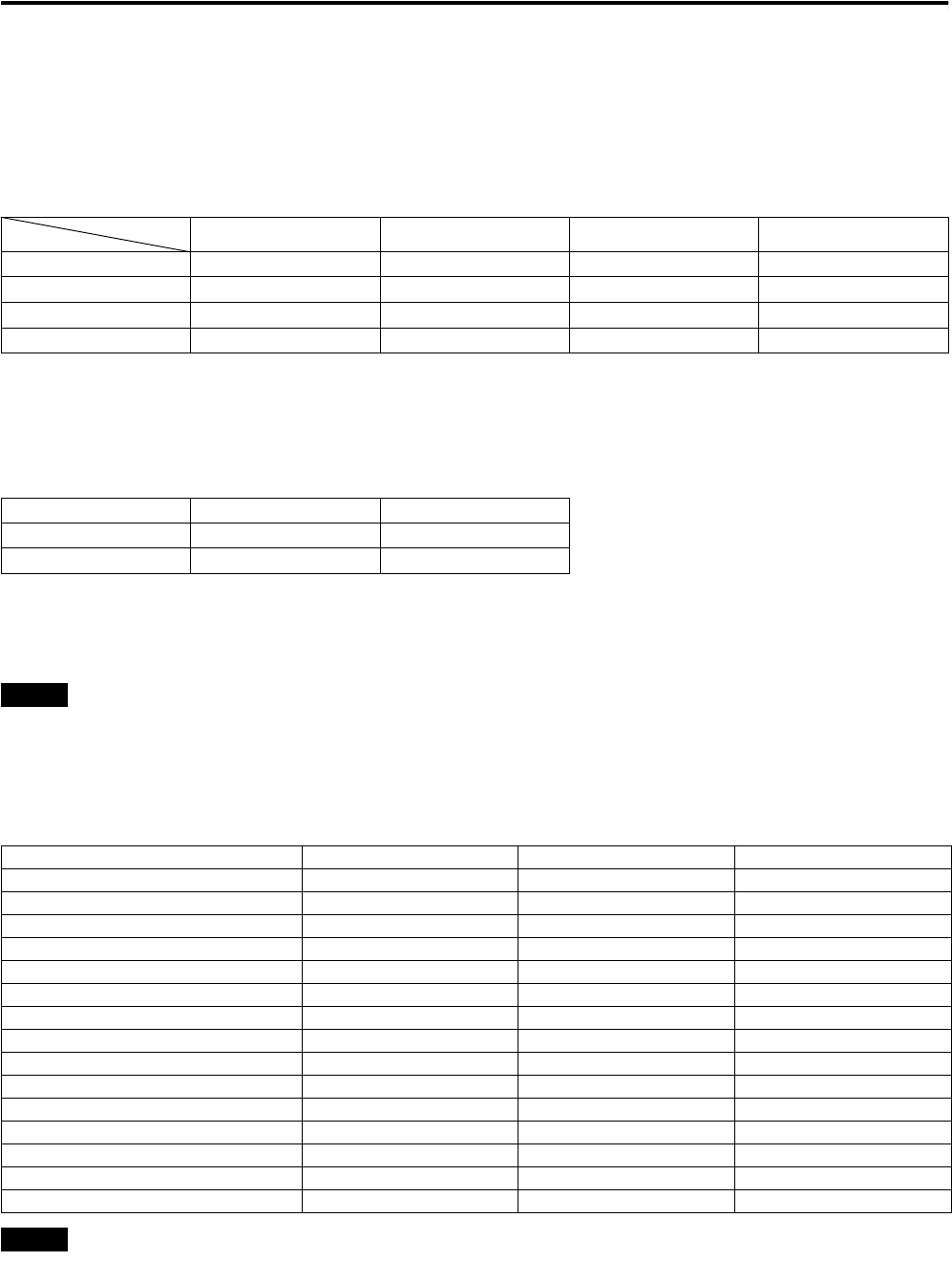
18
DLA-M5000CLE (Re)/ LCT0979-002A / ENGLISH
Connecting to Various Devices
* Before connection, be sure to turn off the projector and connected devices.
* Read the manual which comes with each device thoroughly.
Signals that Can Be Input to the Projector
The following signals can be input to the projector:
■
Video signals
(1) Response to color systems
*1: Responds if Y/C output is available.
*2: Signifies that component signals (“Y, P
B
, P
R
” / “Y, B-Y, R-Y” / “G, B, R, H/C
S
, V”) conform to the signal timing
(synchronization and video period) of each color system. The color systems are used for convenience only.
*3: To use these terminals, a video board (separately sold) is required.
(2) Response to double density (*1), high-vision signals
*4: Signals whose density of scanning lines/field is twice as high.
*5: Responds to signals whose horizontal scanning frequency is 31.5 kHz. NTSC can be made twice as dense by a line
doubler (separately available: recommended article). Also, possible to respond to fully-specified, decoded 525P
progressive signals.
Note
• DTV-format signals (480i, 480p, 720p, 1080i) can be input into this unit (Y, P
B
/B-Y, P
R
/R-Y input terminals).
For details about DTV-format signals (480i, 480p, 720p, 1080i) compatible with this unit, refer to page 65.
■
Computer signals
• Signals with the following resolutions can be input to the input terminal of RGB IN-1 (PC) or RGB IN-2 (G, B, R, H/C
S
, V).
(The following signals are preset.)
Notes
• Interlace signals are not handled.
• Some signals other than listed above can be displayed. But they require adjustment. Even some of the signals listed above
may require adjustment depending on the video board used.
• When a signal other than listed above is input, the screen could be partially erased or an unneeded fold-over screen could
appear.
• Even signals in the frequency range that can be input may not be displayed normally depending on the type of the signal.
• Composite sync.(C
S
) and G on sync. signals can not handled depending on the devices connected.
Color system
Input terminal
NTSC 480i NTSC 4.43 PAL SECAM
VIDEO*
3
‡‡‡‡
Y/C*
3
‡
‡
*
1
‡
-----
Y, P
B
/B-Y, P
R
/R-Y
‡
*
1
‡
*
2
‡
*
2
‡
*
2
G, B, R, H/C
S
, V
‡
*
2
‡
*
2
‡
*
2
‡
*
2
Input terminal
NTSC*
2
22
2
High-vision signal
Y, P
B
/B-Y, P
R
/R-Y
‡‡
G, B, R, H/C
S
, V
‡‡
Screen resolution (standard name) Horizontal frequency Vertical frequency Scanning method
640 × 400 (PC-9801) 24.8kHz 56.4Hz Non-interlace
640 × 350 (VGA1) 31.5kHz 70.1Hz Non-interlace
640 × 480 (VGA3) 31.5kHz 59.9Hz Non-interlace
640 × 480 (Macintosh 13") 35.0kHz 66.7Hz Non-interlace
640 × 480 (VGA VESA) 37.5kHz 75.0Hz Non-interlace
800 × 600 (SVGA1) 37.9kHz 60.3Hz Non-interlace
800 × 600 (SVGA2) 48.1kHz 72.2Hz Non-interlace
832 × 624 (Macintosh 16") 49.7kHz 74.6Hz Non-interlace
1024 × 768 (XGA1) 48.4kHz 60.0Hz Non-interlace
1024 × 768 (XGA2) 56.5kHz 70.1Hz Non-interlace
1024 × 768 (Macintosh 19") 60.2kHz 74.9Hz Non-interlace
1152 × 870 (Macintosh 21") 68.7kHz 75.0Hz Non-interlace
1280 × 1024 (SXGA1) 64.0kHz 60.0Hz Non-interlace
1280 × 1024 (SXGA2) 70.8kHz 67.0Hz Non-interlace
1360 × 1024 (SXGA3: Mac Board) 80.0kHz 75.1Hz Non-interlace
DLA-M5000LE&SCE Eng Re.book Page 18 Tuesday, March 12, 2002 3:59 PM


















